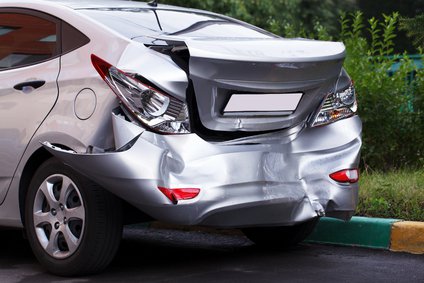
California Vehicle Code Sections That Come Into Play in Rear End Traffic Collisions

Rear End Collision Auto Accident Claims
Rear end traffic collision claims are a major source of personal injury auto accident claims in California. In fact being rear-ended is the most common form of crash in the Golden State. As everyone who has commuted to work on ANY major California Freeway can attest, traffic is horrible. Vehicles will go from traveling at 50 to 60 mph to then come to a sudden stop. When this happens, there is an immediate and real risk of striking the car in front of you. Many times this happens through the driver of the car in back either being inattentive; talking on their phone, texting, eating, or a myriad other things; or following the person in front too close (i.e. “tailgating”). In any instance, the law will almost automatically assume that the car who struck the person from behind is “at fault.”
Legal fault in rear-enders is based primarily on two separate vehicle codes as follows:
1. California Vehicle Code §22350 (traveling at an unsafe speed for roadway conditions); and
2. California Vehicle Code §21703 (following too closely).
California Vehicle Code §22350 states: “No person shall drive a vehicle upon a highway at a speed greater than is reasonable or prudent having due regard for weather, visibility, the traffic on, and the surface and width of, the highway, and in no event at a speed which endangers the safety of persons or property.” Quite simply this means that when you are on a major roadway, you travel at the speed that is safe for the conditions at that particular time. Even though the posted speed limit is 65 mph, if there is heavy traffic, heavy rain, or any other condition that would make driving at the posted speed unsafe, YOU, the driver need to slow down.
California Vehicle Code §21703 states: “The driver of a motor vehicle shall not follow another vehicle more closely than is reasonable and prudent, having due regard for the speed of such vehicle and the traffic upon, and the condition of, the roadway.” This means that every driver needs to leave enough room for the cars in front of them. Tailgating, and weaving in and out of traffic is both dangerous and will put you at fault if you hit someone from behind.
The Role of the Personal Injury Attorney in Rear Impact Car Accidents
When a motor vehicle accident happens where a person has rear-ended another, the plaintiff’s attorney will automatically seek that the 3rd party admits liability first and foremost. Once liability is established, and with a rear end accident, it is almost always automatic. The injured party’s attorney will seek to determine the damages, and seek to prove how the accident caused the damages. Primarily this can be done with an experienced doctor, who understands the mechanics of injury. The force of impact in this type of collisions do tremendous damage to the person struck. This can include spinal cord injuries, head injuries, and knee and shoulder injuries. Imagine, sitting at a standstill and suddenly you feel something strike your back with enough force to cause steel to buckle, plastic to shatter and move your 2000 pound vehicle forward. This puts tremendous physical strain on the human body and is a common cause of injuries to the neck and back including but not limited to the cervical spine (neck), most commonly referred to has “whiplash”. Documenting the physical evidence including property damage and fully assessing the bodily harm through quality medical record review and presentation to the auto insurance claims adjuster can mean the difference between being fully compensated in these claims or being forced to bear the costs of medical expenses and missed time from work due to the fault of another.
